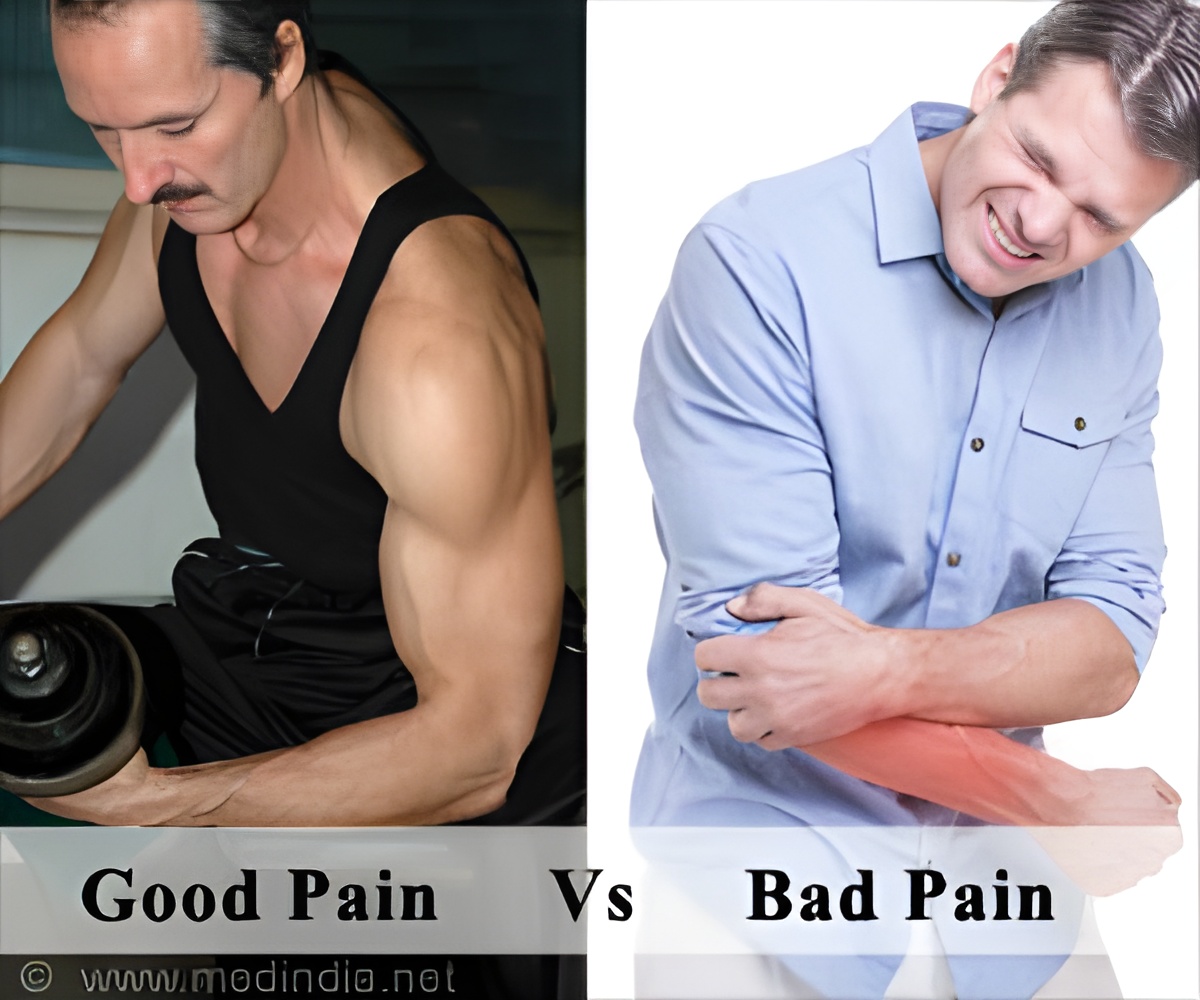Did you know that there is good pain and bad pain. Learn more about it and understand this concept to help exercise better.

It is well known that when athletes exercise, they try to push themselves to new heights. Discomfort is part of the process. While exercising or while completing a routine, they might experience discomfort or pain going through their body without actually injuring themselves. This pain is usually called “Good Pain” and lasts only for as long as the workout routine. It is coined good pain because this pain does not cause the body any harm but actually helps muscles to strengthen. Hence the phrase “No Pain, No Gain” is apt.
“Bad Pain” can occur due to an injury. If there is any discomfort for a long period of time after the workout that does not go away on its own, then it is a sign that something is not right. Bad pain can be recognized if the pain is very intense or if it occurs suddenly. This pain should not be ignored and should be treated right away.
Recognizing Good Pain and Bad Pain
What does good pain feel like? While climbing a really tall set of stairs or a steep hill, it gets difficult to breathe as the amount of oxygen going to the muscles becomes less. When that happens lactic acid starts to accumulate in the muscles. At the beginning almost nothing is felt, but as the ascent goes on it becomes slightly uncomfortable, to a point where it becomes unbearable and one would need to rest before moving any further. So, one would say that one point of differentiation from bad pain is that good pain has more of a gradual build-up.Another way to recognize the pain is the location of the pain. Good pain will be generalised to a region, whereas bad pain is quite specific. For example, if one ‘feels the burn’ in their quads from climbing stairs (good pain), then most likely the entire front of the leg will feel it, all the way from the knees to the hips. On the other hand, if there is a tear or strain in the quadriceps (bad pain), the location of the pain will be a lot more specific – there will be sharp pain right at the point of the tear and in a small area surrounding it.
Another example of good pain and bad pain can be muscle soreness. When muscles have not been exercised in a long time and suddenly are subjected to some exercise routine that they are not used to, a soreness forms over them. Normally, soreness will begin a couple of hours after the workout and will last for a day or two. If this happens, then it is a good sign and is a sign of good pain. It indicates that the muscles are working and easing up. But if the pain does not go for more than two days, if it becomes difficult to move and do any work – it means that during this routine workout you have torn a ligament or muscle and this requires medical help and one will need to consult a physiotherapist or an orthopaedic surgeon for further treatment.










